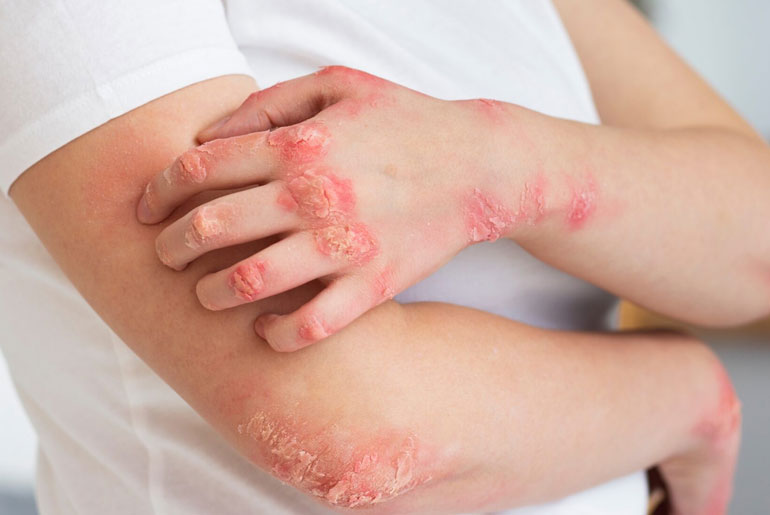Undergoing phototherapy for psoriasis management requires awareness of safe sun exposure practices. Psoriasis, a chronic skin condition marked by itchy, scaly patches on areas like knees, elbows, trunk, and scalp, lacks a definitive cure but can be managed. Phototherapy, involving controlled exposure to ultraviolet (UV) light, is a common treatment.
During this, it’s crucial to protect untreated skin areas, avoid overexposure to natural sunlight, consistently apply high SPF sunscreen, and use protective eyewear. Monitoring skin for any reactions, staying hydrated, and following the healthcare provider’s guidance are essential. This cyclical condition involves flare-ups and remission periods, impacting sleep quality and concentration. Effective management, including phototherapy, can alleviate symptoms and improve overall well-being. Regular communication with healthcare providers ensures personalized care and adjustments to treatment plans.
While a complete remedy for psoriasis remains elusive, several measures can help regulate the rapid growth of skin cells, preventing the formation of scales and patches. In an interview with HT Lifestyle, Dr Rekha Singh, MD.DVL at Oliva Skin and Hair Clinic in Hyderabad, revealed, “One such approach involves exposure to natural sunlight. For some individuals, brief periods of sun exposure can yield noticeable improvements. In warmer climates, particularly during summer, some people have reported a reduction or even disappearance of scales and patches.”
How Sunlight Alleviates Psoriasis Symptoms:
Dr Rekha Singh sahred, “Natural sunlight benefits psoriasis due to its composition of UVA and UVB rays. UVB rays play a crucial role in slowing down the accelerated rate of skin cell growth and shedding, potentially leading to an improvement in psoriasis symptoms. Additionally, sun exposure prompts the body to produce more vitamin D, which is beneficial for overall skin and bone health. However, it’s essential to take precautions against sunburn, especially for individuals with light skin, who are more susceptible to it. They also face a higher risk of developing serious forms of cancer such as melanoma.”
It’s crucial to emphasize that natural sunbathing lacks the controlled environment provided by medical settings, such as phototherapy, she stated, “Certain medications may increase sensitivity to light, heightening the risk of sunburn and skin cancer. For individuals with mild psoriasis, starting with around 30 minutes of sun exposure at noon can be a good initial step. Those with more severe symptoms should begin with shorter exposure times and gradually increase them. However, consulting a doctor before attempting this is crucial, as some individuals may experience skin burning within just 5-10 minutes of exposure. Regardless of the duration of sun exposure, it’s advisable to use sunscreen with a minimum SPF of 30 to protect the skin, even when aiming to benefit from the sun’s rays.”
Guidelines for Safe Sun Exposure in the Treatment of Psoriasis:
Dr Rekha Singh guided, “The amount of sun exposure that can benefit psoriasis treatment should be determined by a person’s physician. Doctors can evaluate an individual’s medical condition and recommend a safe level of sun exposure. Medical advice may include wearing sunscreen consistently when outdoors or avoiding the sun’s peak intensity during typical hours of 10 a.m. to 4 p.m. Additionally, healthcare professionals may suggest a more controlled form of UV exposure, such as narrow-band UVB therapy. It’s crucial for individuals undergoing phototherapy, which encompasses treatments like PUVA (combining UVA rays with psoralen), to steer clear of direct sun exposure. This precaution helps ensure the effectiveness and safety of their treatment plan.”
Sunlight in Psoriasis Treatment: Balance Between Benefits and Risks:
Dr. Rekha Singh highlights the dual nature of sunlight for individuals with psoriasis, acknowledging its potential benefits and risks. UVA light, responsible for tanning, can lead to photoaging with excessive exposure, causing age spots, wrinkles, and broken veins. Conversely, UVB light may cause sunburn, potentially triggering psoriasis and increasing the risk of skin cancer, especially in younger individuals. Sensitivity to sunlight can be heightened by certain medications and supplements, necessitating precautions for individuals on such treatments.
In managing psoriasis, where a definitive cure remains elusive, Dr. Singh underscores the effectiveness of topical treatments and lifestyle adjustments. Under the guidance of healthcare professionals, controlled sun exposure, particularly through UVB rays, can play a crucial role in symptom management. Dermatologist-supervised phototherapy offers a controlled approach to harnessing the benefits of UV rays, with dermatologists best equipped to recommend the optimal type and duration of exposure, along with appropriate sun protection measures. Their expertise ensures a tailored and comprehensive approach to psoriasis management, enhancing both efficacy and safety.
Disclaimer:
The information contained in this article is for educational and informational purposes only and is not intended as a health advice. We would ask you to consult a qualified professional or medical expert to gain additional knowledge before you choose to consume any product or perform any exercise.








